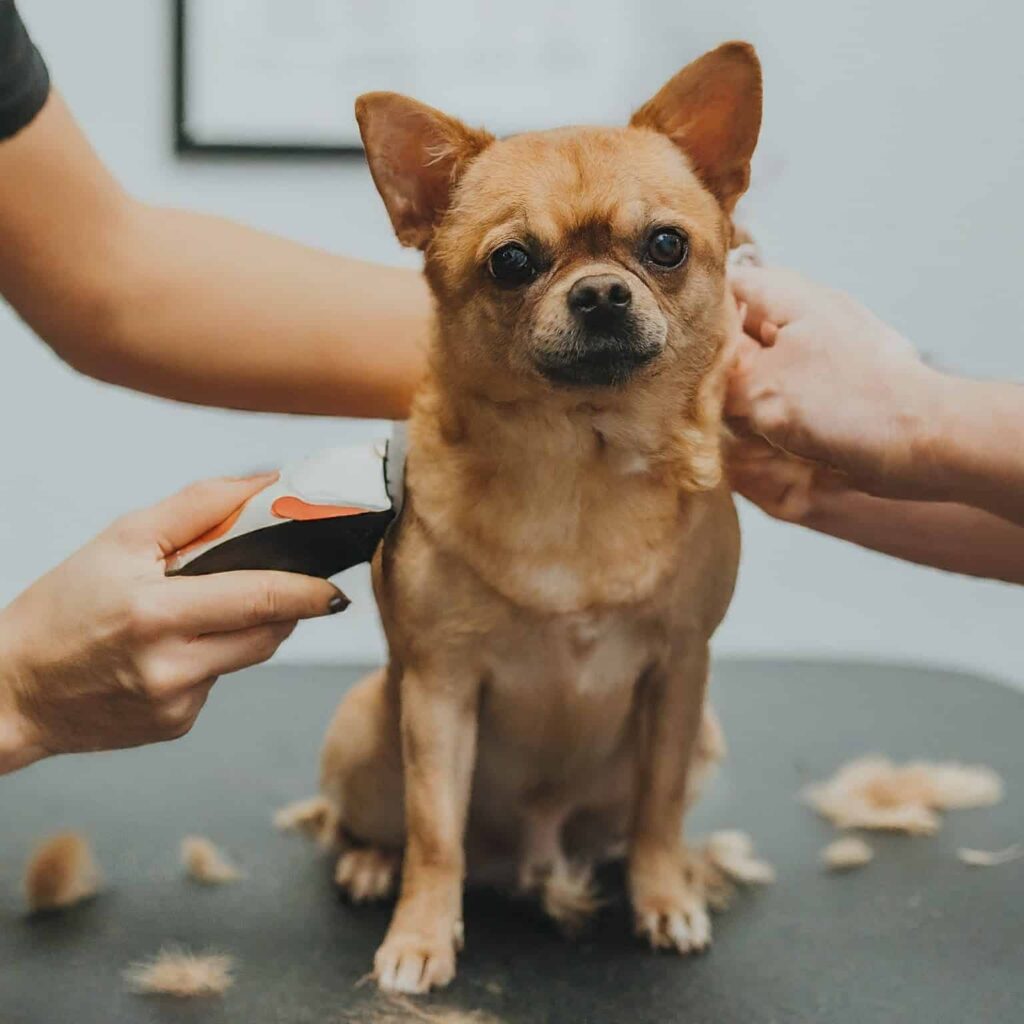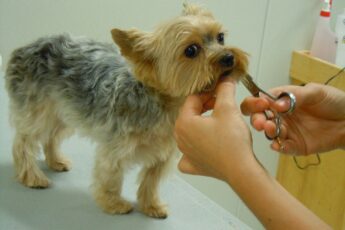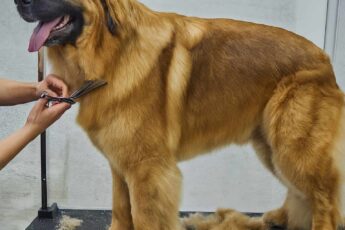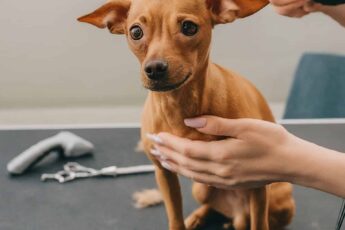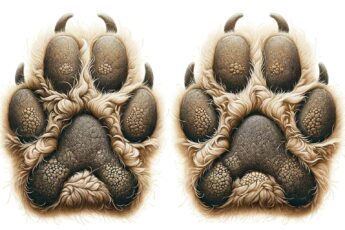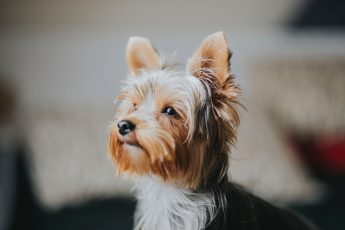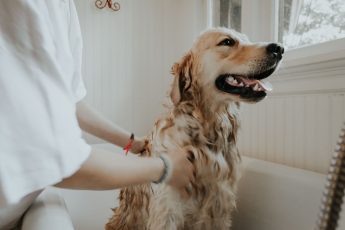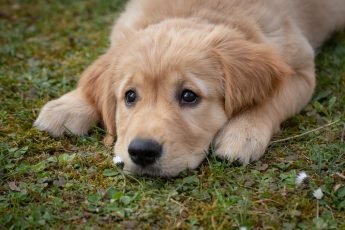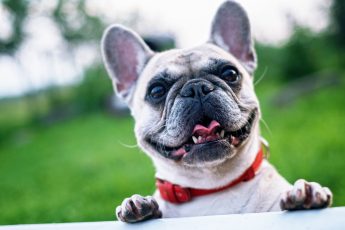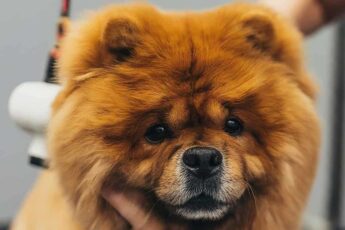Choosing the Right Clippers for Dog Grooming
Picking the right clippers for your dog grooming is crucial. Here’s what to consider:
First, decide between corded and cordless clippers. Corded clippers offer consistent power, while cordless clippers give you the freedom to move around and groom anywhere, with no power outlet needed.
Blade quality is key. Look for stainless steel or ceramic blades. They stay sharp longer and cut more smoothly. Reputable brands like Wahl, Andis, and Oster offer reliable products with various features to meet different needs.
Budget matters, too. Higher-priced clippers often boast better durability and more features, yet many affordable options work well for basic grooming. Read reviews, compare features, and ensure you get the best value for your money.
Noise level is another factor. Some dogs get scared of loud clippers. Quieter models might cost more but can make the grooming process easier for your pet.
Ready to choose the perfect clippers? Focus on power, blade quality, budget, and noise level. Make grooming a breeze!
Best Dog Grooming Clippers
| Image | Price | Buy | Title |
|---|---|---|---|
 | Buy Now | oneisall Dog Shaver Clippers Low Noise Rechargeable Cordless Electric Quiet Hair Clippers Set for Dogs Cats Pets | |
 | Buy Now | Dog Clippers Professional Heavy Duty Grooming Clipper 3-Speed Low Noise High Power Rechargeable Cordless Pet Tools for Small & Large Dogs Cats Pets with Thick Coats | |
 | Buy Now | oneisall Dog Clippers for Grooming for Thick Heavy Coats/Low Noise Rechargeable Waterproof Cordless Pet Shaver with Stainless Steel Blade for Dogs and Animals | |
 | Buy Now | Dog Grooming Kit Clippers, Low Noise, Electric Quiet, Rechargeable, Cordless, Pet Hair Thick Coats Clippers Trimmers Set, Suitable for Dogs, Cats, and Other Pets (Gold) | |
 | Buy Now | Wahl USA Lithium Ion Pro Series Cordless Animal Clippers – Rechargeable, Heavy-Duty, Electric Dog & Cat Grooming Kit for Small & Large Breeds with Thick to Heavy Coats – Model 9766 |
Dog Grooming with Clippers: Safety First
Safety should always come first when grooming your dog. Start by checking the blades. They should be sharp enough to cut through hair smoothly but not so sharp that they can easily cut the skin. Dull blades can tug on the hair, causing discomfort.
Keep your grooming environment calm. Dogs pick up on your stress, so stay relaxed. Have all your tools within reach. This helps you stay focused and avoid accidents.
Many clippers have safety features like blade guards. These prevent the blades from getting too close to the skin. Always use these features if available.
Maintain a firm but gentle grip on your dog. This prevents sudden movements that could cause injury. If your dog seems anxious, take breaks to let them calm down. Use treats and praise to create a positive experience.
In summary, choosing the right clippers and focusing on safety can make dog grooming a more pleasant task for both you and your pet. Keep these tips in mind, and you’ll be on your way to becoming a pro-at-home grooming.
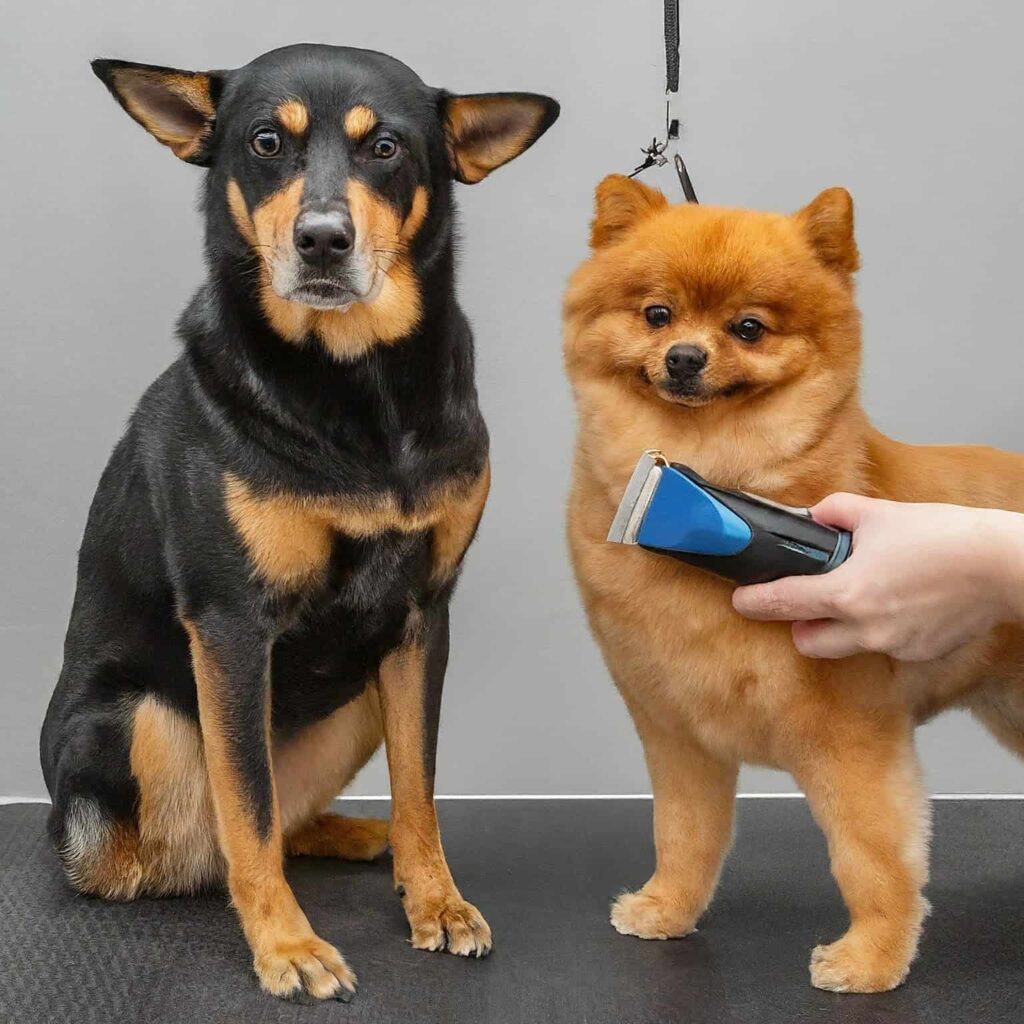
Preparing Your Dog
Preparing your dog for grooming with clippers makes the process smoother and more comfortable for both of you. Start by giving your dog a bath. Clean fur is easier to cut, and it helps remove any dirt or debris that could clog the clippers. Use a gentle dog shampoo and rinse thoroughly.
After the bath, dry your dog completely. Wet fur can be difficult to clip and might damage the clippers. A blow dryer on a low, cool setting works well. Brushing your dog once they’re dry is the next step. This removes tangles and mats, which can be painful if you clip over them.
Inspect your dog’s skin before you start clipping. Look for any cuts, rashes, or hot spots. If you find any, avoid those areas or consult your vet. Also, check for any bumps or lumps so you can be cautious around them.
Use calming techniques if your dog seems nervous. Talk to them in a soothing voice and give them treats to create a positive association with grooming. You want your dog to feel relaxed and safe throughout the process.
Setting Up Your Space
Setting up your grooming space properly is key to a successful clipping session. Choose a clean, well-lit area. Good lighting helps you see what you’re doing and avoid mistakes. A non-slip surface is important to keep your dog from slipping and getting scared. A rubber mat works great for this.
Organize your tools before you start. Have your clippers, brushes, combs, and scissors within easy reach. This helps you stay focused and reduces the time your dog needs to stay still. Keep a spray bottle of blade coolant nearby. It’s useful for keeping the clippers from overheating.
Find a comfortable position for your dog. A grooming table is ideal, but if you don’t have one, a sturdy table or even the floor can work. Make sure your dog feels secure and can’t easily jump off or move around too much.
Minimize distractions in the grooming area. Turn off loud music or the TV, and if possible, keep other pets away. This helps your dog stay calm and makes the grooming process more efficient.
By preparing your dog and setting up your space thoughtfully, you can make grooming with clippers a positive experience. These steps help ensure that both you and your dog are comfortable and ready for a smooth, stress-free grooming session.
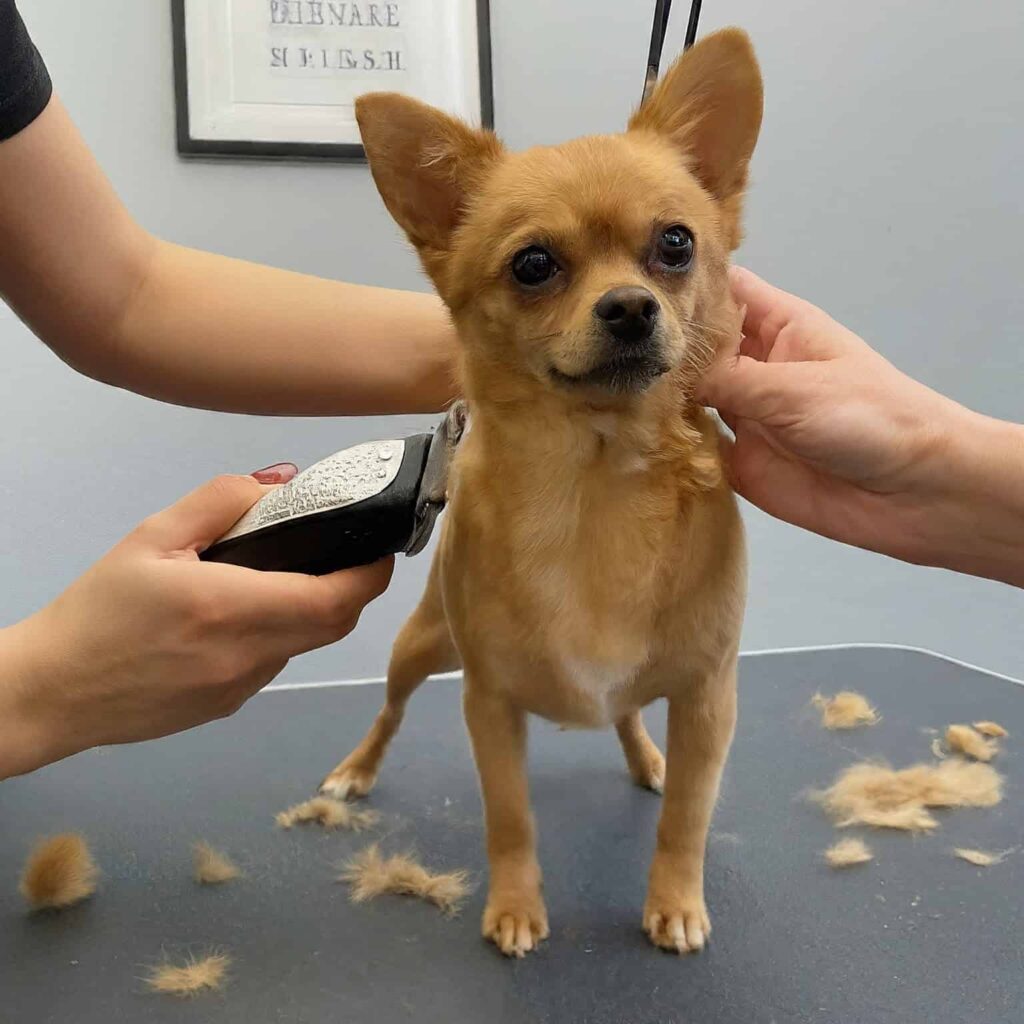
Understanding Coat Types
Knowing your dog’s coat type is crucial for effective grooming. Different coats need different approaches. Dogs typically have either single or double coats. Single-coated dogs have one layer of fur. These coats are often shorter and smoother. Examples include Boxers and Dalmatians. Double-coated dogs, like Huskies and Golden Retrievers, have two layers: a dense undercoat and a longer topcoat. These coats require more attention.
Clipping techniques vary by coat type. For single coats, clipping with the grain of the fur ensures a smooth finish. Double coats require more care. You need to avoid cutting the undercoat too short. This can affect your dog’s ability to regulate temperature.
Seasonal changes also matter. Dogs shed their undercoat in the spring and fall. During these times, you might need to groom more frequently. Regular brushing helps manage shedding and keeps the coat healthy.
Breed-specific needs can complicate things. Some breeds, like Poodles, have curly hair that mats easily. Others, like Terriers, have wiry coats that need special clippers. Research your dog’s breed to understand its unique grooming needs. This knowledge helps you choose the right tools and techniques for the best results.
Starting with the Basics
Begin your grooming session by holding the clippers correctly. A comfortable grip reduces hand fatigue and gives you better control. Hold the clippers like you would a pencil, with your thumb and fingers wrapped around the body. This position allows precise movements.
Start clipping in areas that are less sensitive, like the back or sides. These spots are good for getting your dog used to the sensation and sound of the clippers. Move slowly and steadily. Speed can cause mistakes and stress your dog.
Always clip with the grain of the fur. This technique prevents pulling and gives a smoother cut. Going against the grain can cause uneven cuts and discomfort. Regularly check your progress to ensure an even trim.
Taking breaks is important, especially for longer grooming sessions. Give your dog and yourself time to relax. Use this time to check the blades. If they feel hot, spray them with a coolant to avoid burning your dog’s skin.
By understanding your dog’s coat and mastering basic clipping techniques, you can achieve a professional look at home. These steps lay a solid foundation for effective and stress-free grooming.
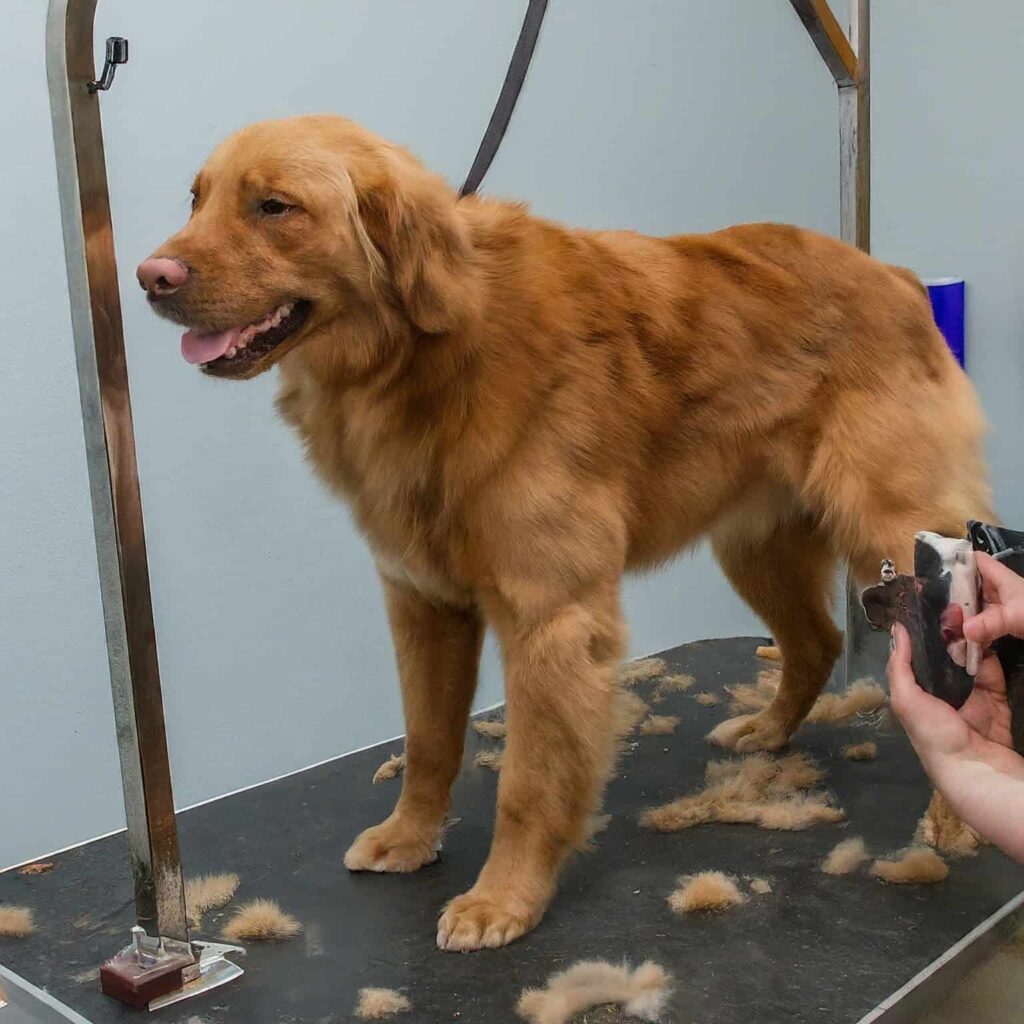
Clipping Techniques
Mastering the right clipping techniques is key to a smooth grooming session. Always start with a clean, dry coat. This helps the clippers glide through the fur without snagging. Begin by holding the clippers at a slight angle and move them in the direction of the hair growth. This approach ensures a more natural look.
Use long, even strokes to avoid creating lines or uneven patches. Short, choppy movements can result in a rough finish. For thicker coats, you may need to go over the same area a few times to achieve an even cut. Keep a steady hand and maintain a consistent pace.
It’s important to avoid sensitive areas initially. Start with the back and sides, then move to the legs and chest. Save the head, ears, and tail for last. These areas are more delicate and require a gentler touch. For the face, use a slower speed and a smaller blade if possible.
Feathering and blending techniques help to create a seamless look. Feathering involves using the clippers to lightly trim the edges of the fur while blending to smooth out the transition between different lengths. These methods give your dog’s coat a polished, professional appearance.
Regularly check your work as you go. Step back occasionally to ensure you’re achieving an even cut. Adjust your technique as needed to maintain a uniform look.
Handling Difficult Areas
Grooming certain parts of your dog can be tricky. The paws, face, and underbelly require special attention. Start with the paws. Hold your dog’s paw gently but firmly. Trim the hair between the pads with care to avoid cuts. Use a small, precise clipper for these tight spots.
When trimming around the face and ears, go slowly. These areas are sensitive, and dogs can be jumpy. Use a low-noise clipper to reduce anxiety. For the ears, clip around the edges first, then carefully trim the fur inside. Be mindful of the ear canal and avoid getting too close.
The underbelly is another sensitive area. Have your dog lie down or gently lift them to access this part. Use a gentle touch and move the clippers slowly. Keep a watchful eye on any folds or skin tags to prevent injury.
The tail also needs careful handling. Start at the base and work your way to the tip. Hold the tail still and trim the fur evenly. For long-haired breeds, consider a feathered finish for a neat look.
Handling these difficult areas with patience and precision ensures a safe and effective grooming session. Taking your time and using the right techniques will make the process more comfortable for your dog and yield better results.
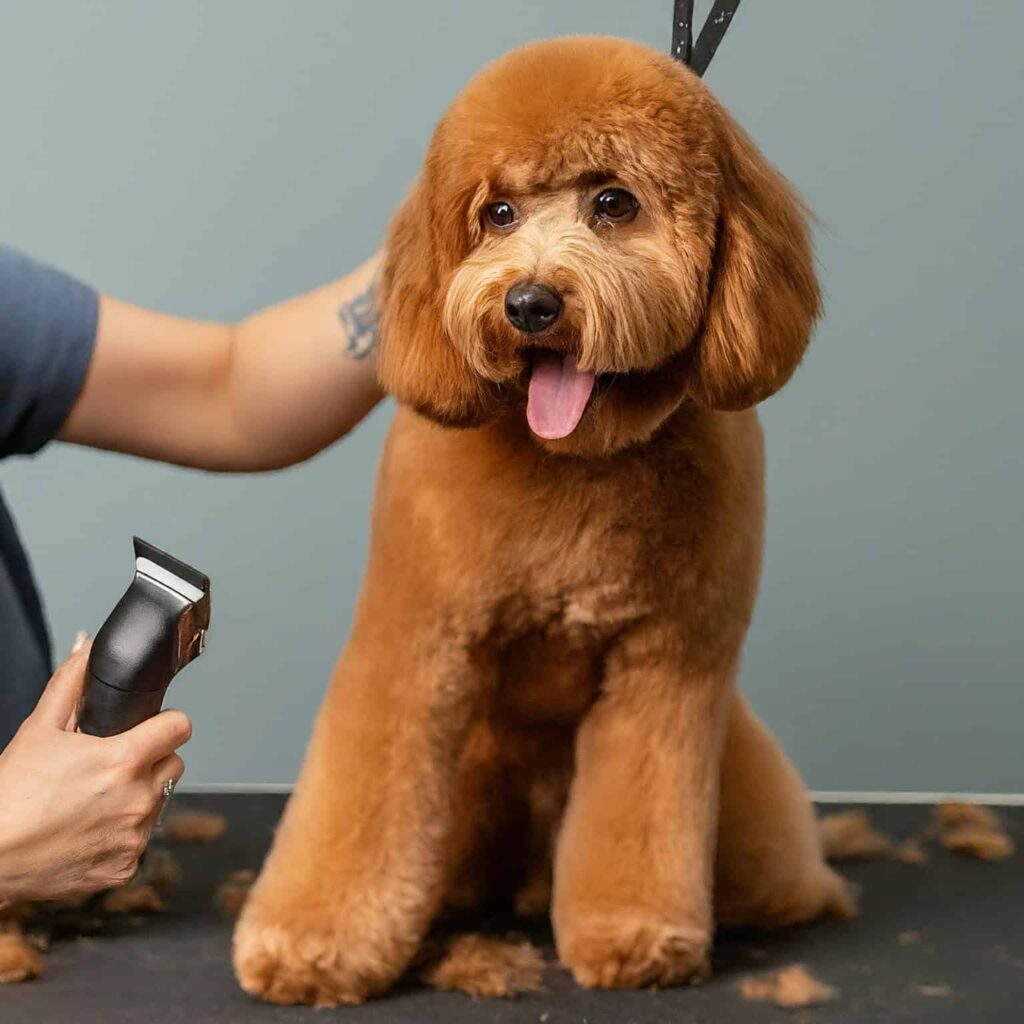
Dealing with Nervous Dogs
Grooming a nervous dog can be challenging, but with patience and the right approach, it becomes manageable. Start by desensitizing your dog to the clippers. Turn them on and off near your dog without using them. This helps your dog get used to the sound.
Positive reinforcement is key. Use treats and praise to reward calm behavior. This creates a positive association with grooming. Start with short sessions, gradually increasing the time as your dog becomes more comfortable.
Pay attention to your dog’s body language. Signs of stress include panting, yawning, or trying to escape. If you notice these, take a break. Let your dog relax and try again later. A calm, reassuring tone helps keep your dog at ease.
Consider using a grooming loop or leash to keep your dog steady. This prevents sudden movements that could lead to accidents. Always hold the clippers gently and move slowly. Quick, jerky motions can startle your dog.
By being patient and using positive reinforcement, you can help your nervous dog feel more comfortable during grooming sessions. This approach makes the experience better for both of you.
Cleaning and Maintenance of Clippers
Proper cleaning and maintenance of your clippers extend their life and ensure a smooth grooming process. After each use, remove any hair from the blades. A small brush works well for this task. Keeping the blades clean prevents them from becoming dull.
Disassemble the clippers according to the manufacturer’s instructions. This allows you to clean all parts thoroughly. Use a damp cloth to wipe away any residue. Avoid using water directly on the clippers to prevent damage.
Oiling the blades is crucial. Apply a few drops of clipper oil to the blades before and after each use. This reduces friction and keeps the blades running smoothly. Regular oiling also prevents rust and extends the life of the blades.
Store your clippers in a dry, safe place. Avoid leaving them in damp areas where moisture can cause rust. A storage case provides protection from dust and debris. Regularly check the power cord and plug for any signs of wear and tear.
For professional servicing, follow the manufacturer’s recommendations. This might include blade sharpening or replacing worn parts. Regular maintenance ensures your clippers perform at their best and provide a comfortable grooming experience for your dog.

Post-Grooming Care
After grooming, it’s important to give your dog a thorough check. Look for any missed spots and even out the fur if needed. Run your hands over your dog’s coat to ensure it’s smooth and free of any uneven patches.
Applying a soothing product can help calm any skin irritation that might have occurred during grooming. There are many sprays and balms available that can ease discomfort and keep your dog’s skin healthy. Always choose products that are safe for dogs and free from harsh chemicals.
Final brushing is the next step. It helps remove any loose hair and gives the coat a polished finish. Use a brush suitable for your dog’s coat type. This step also allows you to check for any tangles or mats you might have missed during clipping.
Lastly, reward your dog. Give them a treat or some extra playtime. Positive reinforcement makes grooming a positive experience and helps your dog associate grooming with good things. This makes future grooming sessions easier and more pleasant for both of you.
Common Mistakes to Avoid
Avoiding common mistakes can make dog grooming with clippers much more effective. One major mistake is rushing the process. Take your time and be patient. Hurrying can lead to uneven cuts and increase the risk of accidents.
Using the wrong blade size is another common error. Different parts of your dog’s body may require different blade lengths. Research and use the appropriate blades for various areas to achieve a uniform cut.
Neglecting regular maintenance of your clippers can cause problems. Dull blades and dirty clippers can tug on your dog’s fur and cause discomfort. Clean and oil your clippers regularly to keep them in good working condition.
Lastly, always consider your dog’s comfort. Ignoring signs of stress or discomfort can make the grooming process traumatic for your dog. Pay attention to their body language and take breaks if needed. Making the experience as positive as possible will make grooming easier in the long run.
By avoiding these common mistakes, you can ensure a smoother, safer, and more effective grooming session for your dog. Careful attention to these details can make a significant difference in the quality of your dog’s grooming and their overall experience.
Special Considerations for Puppies and Older Dogs
Grooming puppies and older dogs require a gentle approach. Puppies are new to grooming, so start with short sessions. Introduce them to the clippers gradually. Let them sniff and hear the clippers before you start using them. This helps them get used to the sound and sensation.
For puppies, use a gentle touch and be patient. Their skin is sensitive, and their fur is softer. Short sessions with lots of praise and treats can make grooming a positive experience. Always use clippers designed for puppies to ensure safety and comfort.
Older dogs might have different needs. They can have sensitive skin, arthritis, or other health issues that make grooming more challenging. Be mindful of any sore spots or stiffness. Use a slow, gentle approach and give them frequent breaks. A soft brush and clippers with a quiet motor can make the process easier for them.
Adjust the frequency of grooming based on their needs. Puppies might need more frequent grooming as their fur grows quickly. Older dogs might benefit from shorter, more frequent sessions to avoid stress. Pay close attention to their reactions and adjust your technique accordingly.
Resources and Further Learning
To improve your dog grooming skills, explore various resources. Online tutorials and videos provide visual guidance and can be very helpful. Websites like YouTube have many grooming channels where professionals share tips and techniques. Watching these can give you a better understanding of how to handle different coat types and grooming challenges.
Books and guides are also valuable resources. They offer detailed information and step-by-step instructions. Look for books written by experienced groomers or veterinarians. These often include helpful illustrations and cover a wide range of grooming topics.
Consider taking a professional grooming course. Many grooming schools offer short courses for pet owners. These courses provide hands-on experience and expert instruction. They can teach you advanced techniques and give you confidence in your grooming skills.
Local grooming workshops can be a great way to learn from professionals in your area. These workshops often cover specific topics like breed-specific grooming or handling difficult dogs. They also provide an opportunity to ask questions and get personalized advice.
By utilizing these resources, you can enhance your grooming skills and ensure your dog looks and feels their best. Continuous learning and practice will help you become more proficient and make grooming a more enjoyable experience for both you and your dog.
Expanding your grooming skills is easier with the right resources. Here are some excellent options:
- Top Dog Tips – This site offers a comprehensive list of online dog grooming courses, including programs from well-known institutions like Penn Foster and Paragon School of Pet Grooming. They provide digital study materials, instructional videos, and hands-on training experiences (Top Dog Tips).
- Jess Rona Grooming – Celebrity groomer Jess Rona offers online courses for both professional groomers and pet owners. Her tutorials cover face grooming, creating calm environments, and detailed grooming techniques (JessronaCourses).
- Jodi Murphy Grooming – Jodi Murphy provides a complete instructional series through online videos. Her courses cater to all levels, from beginners to advanced groomers, and cover a wide range of breeds and techniques (Jodi Murphy Instructional Series).
- Animal Behavior College – This institution offers a structured online program that includes stages on clipper use, scissor control, breed profiles, and even an externship for hands-on experience. They also provide pet CPR and First Aid certification (Animal Behavior College).
- QC Pet Studies – Their blog offers free resources for dog groomers, including articles on pet health, handling aggression, and business tips for mobile groomers. They also have a vibrant online community and forums for networking and support (Become a Pet Care Professional).
